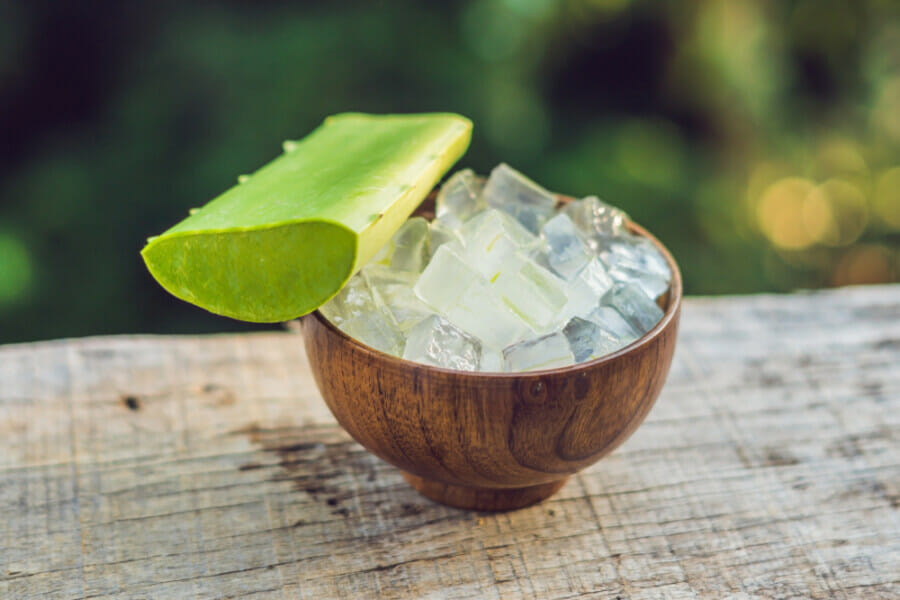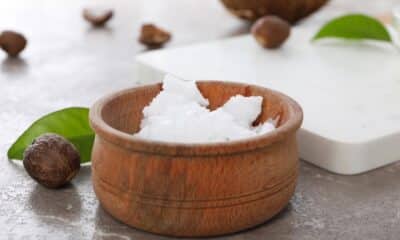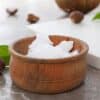The Advantages & Disadvantages Of Applying Frozen Aloe Vera On Your Face Every Morning (And Recipe!)
TikTok is known for promoting unconventional beauty treatments. From using onion water to condition hair to substituting lube for makeup primer, the options seem endless and sometimes off-putting. However, after seeing beauty influencer Jaclyn Hill recommend rubbing homemade frozen aloe vera on her face daily, it piqued my interest. Aloe vera is a well-established skincare ingredient, so I believed it was worth a shot. Ivy Lee, MD, a certified dermatologist in Pasadena, California, suggests that this practice could be beneficial.
Dr. Lee states, “It’s likely very hydrating and, particularly when cold, incredibly soothing. This is why aloe has been used for ages to alleviate sunburns. I can see the chilling effect and the moisturizing benefits of aloe vera as a relaxing addition to your morning routine.”
Inspired by this, I decided to test it myself. For one week, I committed to applying frozen aloe vera on my face each morning. Here’s how it went.
How to prepare frozen aloe vera
To create frozen aloe vera, I followed the steps demonstrated by Hill in this video:
@jacattack Easy peasy guys! #fyp #aloevera #beauty #skincare #skincareroutine #MadewithKAContest ♬ original sound – Jaclynhill
1. Obtain an aloe leaf
Fresh aloe works best for this hack, so you’ll need a leaf. I got a large leaf from the local grocery store, but you can also use clippings from an aloe vera plant.
2. Trim the leaf
Begin by removing all the pointed edges to access the gel inside the leaf. After trimming the sides, expose the aloe gel inside. Lay the leaf flat on a table, apply slight pressure to the top, and slice the leaf in half lengthwise. This will yield two segments with a tough green outer layer and a soft gel interior.
3. Extract the gel
Using a large metal spoon, scrape out all the gel from the leaf into a heap.
4. Transfer the gel to a blender
Take the gel and place it in the blender. This step may feel unpleasant, resembling a large pile of mucus. However, try to view it as nature’s hydrating substance for the skin, making this part somewhat more bearable.
5. Add water and blend
Pour some cold water into the blender with the aloe and blend until well mixed, resulting in a foamy texture.
6. Allow it to settle for 20 minutes
Remove the blender’s lid and let the mixture settle for approximately 20 minutes.
8. Pour the mixture into molds
Hill used plastic ice pop molds for this step, which allows for easy application of the frozen aloe vera on the face. If you prefer not to buy molds, you can use a regular ice cube tray, although applying the gel may make your fingers very cold.
Experience of applying frozen aloe vera cubes on my face every morning
Initially, I tried applying frozen aloe at night, following Hill’s routine, but I found it challenging. Therefore, I switched to mornings and found it to be invigorating for my skin.
Hill suggests rubbing the aloe until it fully melts, with occasional dabbing to manage drips. However, I found applying too much aloe made my skin slightly itchy. Consequently, I opted for a lighter application, gently rubbing the ice cube on my face for about a minute, relishing the cooling sensation. Although less aloe was used, there was excess on my face. To address this, I utilized a reusable silicone mask from Experiment Beauty, treating the aloe like a sheet mask.
Throughout the week, I adhered to this approach, wearing the DIY sheet mask for 10 to 20 minutes while attending to other activities. After removing and rinsing off the mask, I patted the aloe into my skin while it was still moist before continuing with my skincare regimen.
In conclusion, despite the ritual of making and applying frozen aloe vera feeling extravagant, I grew to appreciate it. It provided a refreshing boost and left my skin looking dewy and radiant. If you have dry skin, seek to soothe irritation, or want to experiment with a new beauty trend, consider trying this method soon.













